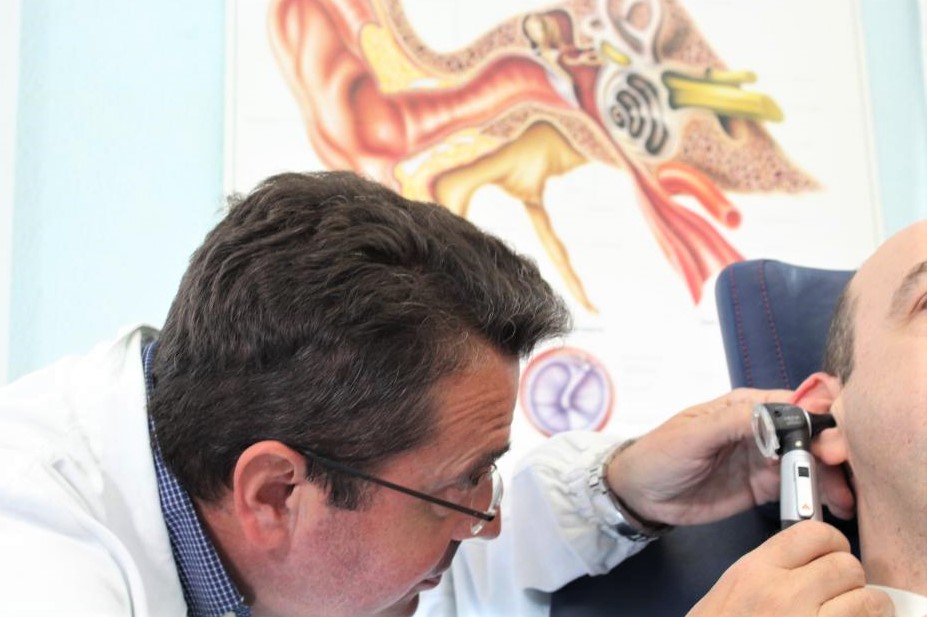
Headaches in bed? Could be otoliths
Let’s talk about otoliths. One is easily left speechless when considering the sophisticated mechanisms that regulate our balance in the ear
Sometimes a ‘pebble’ is enough to upset them and cause annoying vertigo. This is the case with otoliths.
What are otoliths?
To understand this, let’s take a ‘little trip’ beyond our eardrum, into the inner ear.
This is in fact the seat of our balance sensors.
These structures are contained in ampullae carved into the bone and are filled with a liquid, the endolymph.
Inside are the balance sensory cells, equipped with vertical cilia, on which rests a layer of countless crystals called otoliths, which act like tiny pebbles.
With each movement of the head, the otoliths, being heavier than the lymph, cause a deflection of the cilia of the sensory cells.
This stimulation sends a signal to the brain informing it of changes in the position of our head in space.
Otolith symptoms: dizziness and vertigo
When an abnormal detachment takes some otoliths out of their natural location.
These settle at the bottom of the ampulla between the sensory receptors and, as long as we remain upright, do not cause any discomfort.
But every time we lie down or stand up, the otoliths move inside the ampulla causing a violent impulse to the sensors, which in turn send a sudden spinning signal to the brain.
This causes annoying dizziness, which mainly manifests itself in dizziness in bed.
The scientific name of the disorder is benign paroxysmal positional vertigo and the episodes recur whenever the head changes position, especially when lying down or turning on one’s side, especially at night.
While standing, during the day, only a vague sense of instability persists, without dizziness.
Manoeuvre for otoliths
What to do in case of dizziness in bed? A specialist assessment with an examination is useful to gather all the data on the case.
Once it has been established that it is paroxysmal positional vertigo, the specialist usually chooses a different treatment than for all other forms of vertigo, such as those for Meniere’s syndrome or malignant paroxysmal positional vertigo.
Liberating manoeuvres, such as Semont’s manoeuvre, Epley’s manoeuvre, and McClure’s manoeuvre, depending on the affected ampulla.
They consist of a series of head and body movements conducted by the doctor on the patient, in order to get the otoliths out of the ampulla, so that the patient is immediately freed from the disorder.
If the manoeuvre is successful, the patient experiences a brief, violent vertigo during the execution, with rotation of the external environment reversed from that present during the crisis.
This is called liberating vertigo precisely because it coincides with the release of the otoliths from the ampulla.
Read Also
Emergency Live Even More…Live: Download The New Free App Of Your Newspaper For IOS And Android
The Vestibular Rehabilitation Of Vertiginous Patients
Headaches And Dizziness: It Could Be Vestibular Migraine
Migraine And Tension-Type Headache: How To Distinguish Between Them?
First Aid: Distinguishing The Causes Of Dizziness, Knowing The Associated Pathologies
Cervical Dizziness: How To Calm It Down With 7 Exercises
Paroxysmal Positional Vertigo (BPPV), What Is It?
First Aid: The Causes And Treatment Of Confusion
Benign Paroxysmal Positional Vertigo (BPPV): Symptoms And Liberating Manoeuvres To Cure It
Benign Paroxysmal Positional Vertigo (BPPV): Causes, Symptoms And Treatment
Benign Paroxysmal Positional Vertigo Or Canalithiasis: What It Is And What Causes It


